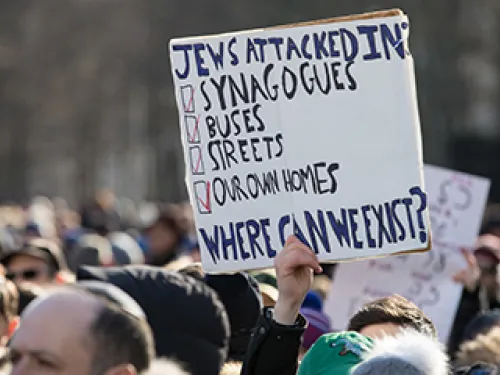Related Items
In the early morning of October 7, 2023, following a period of rocket fire, an estimated 3,000 Hamas terrorists invaded Israel from Gaza and brutally attacked 22 Israeli civilian communities near the Gaza border, a music festival and about a dozen IDF bases and posts. This attack, which occurred on a Shabbat morning that fell on the holiday of Simchat Torah, took Israel by surprise. The gunmen mercilessly massacred at least 1,200 people, mostly civilians, who were shot, mutilated, burned, tortured, raped and decapitated or dismembered, among them babies and children, the elderly, the disabled, men and women. Those killed included Jews, Muslims, Arabs, Bedouin, Druze and individuals of 40 different nationalities. The terrorists further kidnapped around 240 people, including babies and the elderly, from their homes, and dragged them back to Gaza where they remain held hostage. The hostages included citizens of Israel, Argentina, China, France, Germany, the Philippines, Russia, South Africa, Sri Lanka, Tanzania, Thailand, the United States and other countries.
Since October 7, Hamas has fired over 11,000 rockets into Israel’s major civilian centers, including Tel Aviv. In response, Israel called up an approximate 350,000 reservists and launched a counter-offensive against Hamas targets in northern Gaza, first by air, followed by a ground operation. The Israeli government defined its goals as twofold: First, the safe return of all the hostages being held in Gaza; Second, to degrade and destroy Hamas in order to restore security along the Israel-Gaza border and ensure Hamas can no longer pose a threat to Israelis.
The reality of Gaza makes the military operation particularly complex, and unfortunately has led to much suffering among Gazan Palestinian civilians through this war. Gaza is densely populated, and Hamas has established its operations within tunnels underneath civilian centers, including apartment buildings, schools, mosques, amusement parks, and hospitals. Israeli officials maintain they have sought to minimize civilian casualties, including calling on civilians to evacuate northern Gaza prior to the operation and other areas through the military campaign, and establishing humanitarian corridors.
In addition to the large number of Gazan civilians who have been killed and wounded, Gaza residents are suffering from a shortage of humanitarian supplies. While Israel reports regular entry of humanitarian goods for civilians, aid agencies do not consider the scale to be enough to meet the need. At the same time, reports indicate that Hamas has stockpiled months-worth supplies of food, water and fuel for their own use, and has been stealing truckloads of international aid that has entered Gaza since the fighting began.
In addition to fighting Hamas, Israel has been confronted by threats on two other fronts: Hezbollah in Lebanon and the Houthis in Yemen. Hezbollah has fired numerous rockets and missiles at Israeli civilian centers in the northern part of Israel. Houthi terrorists in Yemen have fired numerous long-range missiles towards the southern Israeli city of Eilat, most of which have been intercepted by Israeli and US anti-missile systems.
Hamas, Hezbollah and the Houthis are proxies of and funded by the Islamic Republic of Iran. In order to protect civilian life in the north and the south from rocket fire and other security threats and to provide haven to those whose homes and communities were destroyed by Hamas terrorists on October 7, Israel has relocated over 200,000 civilians to other locations within Israel.









